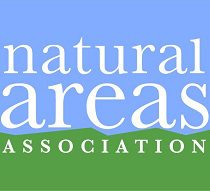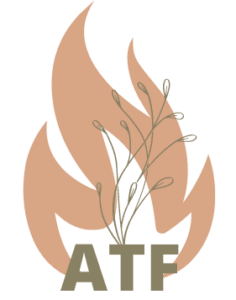Post-fire Environment & Management
View article.
This study evaluated vegetation response to different intensities of deferred rotation cattle grazing over 16 years (2007–2022) on burned Wyoming big sagebrush steppe in eastern Oregon. Treatments were applied in a randomized complete block, which included no grazing on burned (nonuse, n = 5) and unburned (control, n = 5) steppe; and cattle grazing at low (low, n = 4), moderate (moderate, n = 4), and high (high, n = 4) intensities on burned steppe. Vegetation dynamics were evaluated by repeated measures analysis of canopy cover and density of shrub and herbaceous species and functional groups. Herbaceous functional groups were an early-season bunchgrass (one species, Sandberg bluegrass), tall perennial bunchgrasses, perennial forbs, annual grass (one species, cheatgrass), and annual forbs. Tall perennial bunchgrass, Sandberg bluegrass, and perennial forb cover and density did not differ among the treatments but did decrease over time in all treatments. The cover of several tall bunchgrass species was generally less in the high treatment, mainly, Idaho fescue and Thurber’s needlegrass. The cover of cheatgrass and annual forbs varied among years but was greater in the burned-grazed and nonuse treatments than in the control. Native plant cover in the burned treatments (grazed and nonuse) represented 77%–85% of total herbaceous cover versus the control where native plants comprised 91% of the total. Annual weather variability appears to account for most of the compositional dynamics measured in the various grazed and ungrazed treatments.
View brief.
For nearly 12 years, the Field Guide for Mapping Post-Fire Soil Burn Severity has provided BAER teams with consistent methodologies, tools, and terminology to quickly and accurately identify postfire conditions. RMRS Research Engineer Pete Robichaud and colleagues created the field guide, which is now available in Spanish.
View white paper.
Like many communities across the western United States, the greater Flagstaff area in northern Arizona has experienced multiple wildfires in recent years that have resulted in postfire flooding. The 2019 Museum Fire provides a case study for better understanding how the cascading disturbances of wildfire and postfire flooding, which can be further compounded by adjacent disturbances like monsoon-related flooding, impacted Flagstaff residents, and how they were informed of, perceive, and respond to these risks. In 2022, we conducted a survey in Flagstaff after 2021 flooding associated with the Museum Fire burn scar and monsoonal events to better understand attitudes “before” and “after” flooding. This resulted in findings in eight thematic areas: 1) respondent demographics; 2) geographic distribution of respondents in 2022; 3) experiences with recent flooding events; 4) communication during flood events; 4) flood risk perceptions; 6) flood insurance coverage; 7) mitigating flood risk; and 8) managing flood risk, wildfires, and forest management. This work builds upon a survey we completed in 2019 immediately following the Museum Fire that evaluated respondents’ experience with the fire and evacuation, communication of fire emergency information, and opinions regarding forest management.
View article and factsheet.
In California’s dry mixed conifer forests, increasingly large high severity wildfires threaten to convert significant areas of forested land into shrub dominated landscapes in the absence of active reforestation, including control of competing vegetation. Previous studies have found that salvage logging and other methods used to prepare a site for reforestation may reduce shrub cover after wildfire. This study investigated the effect of masticated fuel depth on shrub growth where salvage logging and mastication followed high severity wildfire.
View field guide.
In the weeks following the 2022 Cedar Creek Fire, an Interagency Burned Area Emergency Response (BAER) team was mobilized to identify and mitigate risks to human life and safety and critical water resources in the surrounding communities, including Oakridge, Oregon. During their assessment, the BAER team used a field guide developed by the Rocky Mountain Research Station to create a soil burn severity map and identify areas prone to elevated erosion. Their field work led to quick assessment of potential harm to water quality in Waldo Lake.
View article.
Native species that are abundant and persistent across disturbance-succession cycles can affect recovery and restoration of plant communities, especially in drylands. In the sagebrush-steppe deserts of North America, restoring deep-rooted perennial bunchgrasses (DRPBGs) is key to the strategy for breaking an increasingly problematic cycle of wildfire promoted by exotic annual grasses (EAGs) and displacement of perennials by post-fire increases in EAGs. We asked how Sandberg bluegrass (Poa secunda)—a common native grass that shares traits with EAGs such as resilience to disturbance and rapid, shallow-rooted, early season growth—(1) recovered after wildfire, (2) responded to different combinations of native-plant seedings of DRPBGs and EAG-targeting herbicides; and (3) in turn, related to DRPBG recovery.
View article.
Fuels, pre-fire weather, and topography were important predictors of burn severity, although predictor importance varied between fires. Post-fire debris-flow hazard rankings from predicted burn severity (pre-fire) were similar to hazard assessments based on observed burn severity (post-fire).
Rising from Ashes: A Tribe’s Nature-based Approach to Watershed Restoration will highlight an innovative and iconic case study in public and private collaboration on sovereign tribal lands following a series of catastrophic wildfires. Given the increasing frequency of these fires, there is a vital need to mitigate destruction through preemptive nature-based restoration practices before disaster strikes. By collaborating with federal agencies and other partners to incorporate indigenous knowledge and values into the recovery planning process, the Santa Clara Pueblo is working to achieve long-term, sustainable resiliency of the watershed.
The purpose of this Stewardship in Action Field Workshop is not simply to share what was learned by the Santa Clara Pueblo and their many partners, but also to engage land and water management practitioners from tribal nations, federal and state agencies, and nonprofit organizations from around the continent to share information and leverage success for the benefit of local communities.
The agenda features three days of content featuring both indoor presentations and field experiences. Sessions will explore public and private collaboration on sovereign tribal lands, process-based restoration and watershed resilience, forestry and fire management, sediment stabilization, native plant restoration, indigenous knowledge, nature-based solutions, and preparing for future climate impacts by working together.
Webinar registration.
Parts of the western U.S., like southern California and Colorado, have a history of damaging debris flows after wildfire. Other regions are facing new postfire risks due to expanded wildfire activity. After a wildfire, emergency managers need rapid answers to the questions: Where in the burn area are debris flows likely? How much rain will it take to cause a problem? And how big will that problem be?
Using examples of recent postfire events, Jason Kean will describe how the U.S. Geological Survey and its partners work to answer those questions. He will also discuss current research to improve debris-flow hazard assessments with new tools to answer the questions: Where will debris flows will travel? How long it will take the burn area to recover? And what are the risks to future fires?
Webinar recording.
The Wildfire Ready Watersheds Program provides guidance to help predict where and what post-fire impacts will be felt in local communities. The program provides a detailed work plan that community groups can use to refine and add detail to the study in ways that reflect local priorities and values. Importantly, the Wildfire Ready Watersheds Program also provides guidance on actions that may be taken to reduce the impact of these post-fire hazards on infrastructure and natural resources – both before, and after, a wildfire occurs. The Wildfire Ready Watershed Program hopes to support pre-and post-wildfire planning and response efforts in your community.






